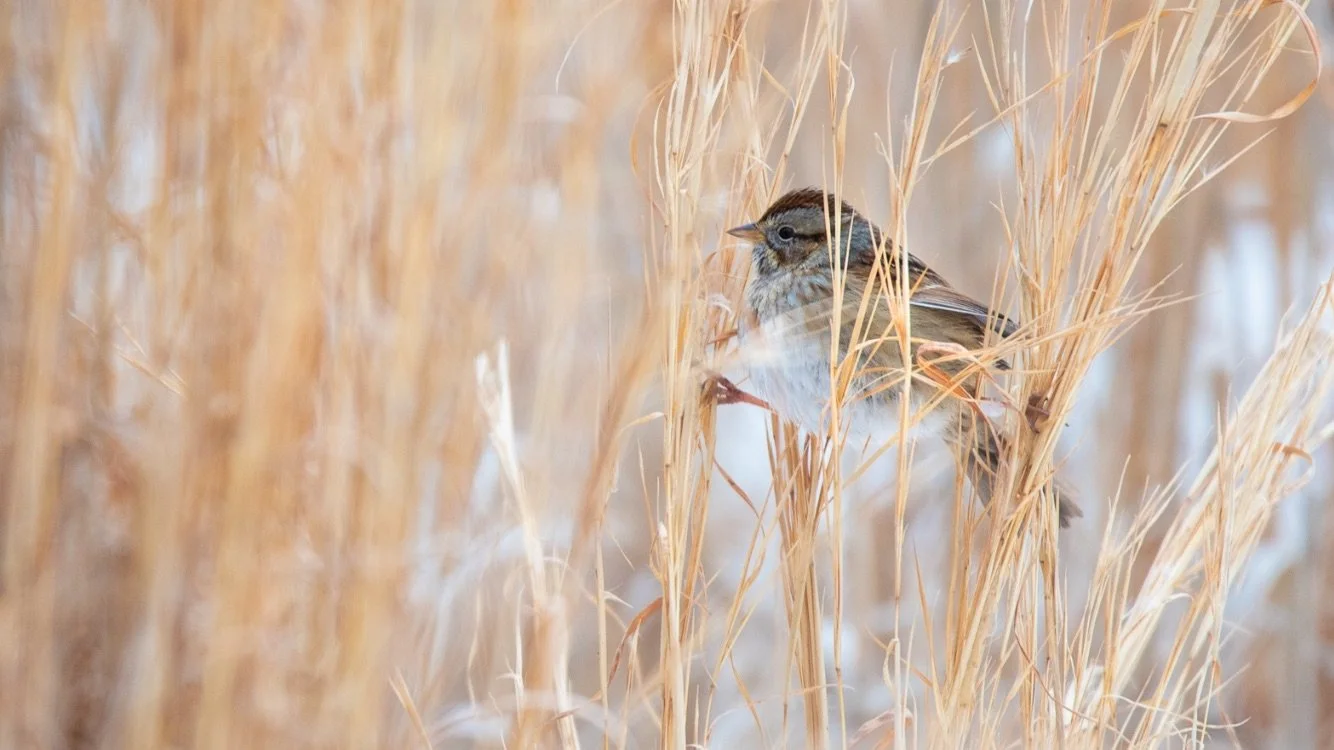While things have been slow overall at my feeder of late, I have had plenty of visits from one bird in particular… A White-breasted Nuthatch! What if I told you that despite being one of my most active visitors, the bird isn’t actually eating the seeds? If you’re wondering what’s going on, or perhaps you’ve experienced something similar, the bird is neither crazy, nor is it wasteful… It’s actually a fairly common phenomenon this time of year known as caching!
White-breasted Nuthatch
Put simply, caching seeds is a way for birds to store seeds during times of plenty (right now, when there is abundance of food available in the wild)
Through my binoculars, I was able to observe that the Nuthatch was wedging a safflower seed into the nooks and crannies of the bark of a large maple outside my window. Just while I was watching the bird made more than ten trips back and forth from the tree to the feeder. Nuthatches aren’t the only backyard birds that will store seeds for later. Carolina Chickadees, Tufted Titmice, White-breasted Nuthatch, and certain woodpeckers all will engage in seed caching. For more information, I’ll link to a good article on Cornell’s All About Birds page here.
Have your feeders seemed slower than normal to you? We assure you, everything is just fine. Each year, we experience this typically from September through the first part of November, or at least until when it starts to get cold out. The reason? This time of year is a time of plenty for birds. Every wild plant that produces seeds, nuts, berries, or fruits is doing just that. In addition, the warm days and mild nights mean that there are still numerous insects available for birds to prey on. (As evidenced by me still having to use our Murphy’s Naturals Mosquito Repellent Insect Sticks when I eat outside in mid October.) Put simply, the birds don’t need feeders right now. In addition to the reasons I just listed, remember that with the breeding season concluded, they aren’t having to feed young anymore. That means that not only is there an abundance of food in the wild, but also they only have themselves to take care of. In other words, it’s a pretty good time to be a bird!
A Swamp Sparrow Eating Grass Seeds in Winter
Eli Haislip
Once we get into colder weather, when insects become more scarce, expect to see a sharp uptick in feeder activity. Nothing brings birds back to our feeders quite like a cold, frosty morning! In the meantime, now is the perfect time to take your feeders down and give them a good cleaning. In our experience, dawn and good hot soapy water with a thorough rinse works well. Just make sure the parts of the feeder are well dried before you put seed back in to keep it from getting funky.





